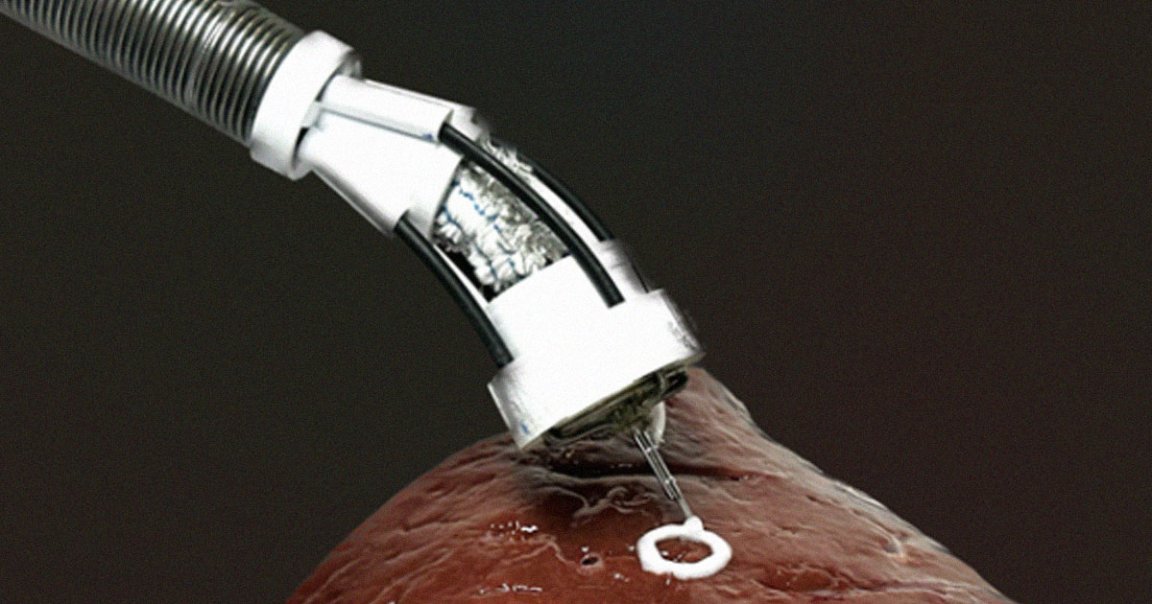
A team of engineers at the University of New South Wales in Sydney, Australia, has developed a tiny, flexible robotic arm that’s designed to 3D print material directly on the surface of organs inside a living person’s body.
The futuristic device acts just like an endoscope and can snake its way into a specific location inside the patient’s body to deliver layers of special biomaterial to reconstruct tissue, clean up wounds, and even make precise incisions — an amazing jack-of-all-trades they say could revolutionize certain types of surgery.
“Existing 3D bioprinting techniques require biomaterials to be made outside the body and implanting that into a person would usually require large open-field open surgery which increases infection risks,” said Thanh Nho Do, UNSW Syndey biomedical engineering lecturer and team lead, in a statement.
“Our flexible 3D bioprinter means biomaterials can be directly delivered into the target tissue or organs with a minimally invasive approach,” he added. “This system offers the potential for the precise reconstruction of three-dimensional wounds inside the body, such as gastric wall injuries or damage and disease inside the colon.”

It’s not the first in-vivo 3D printer ever to be created. In 2020, for instance, a group of Chinese researchers developed a microrobot that can be used to patch stomach ulcers.
But Do and his colleagues say their robot improves on the idea in a number of ways. For one, it’s tiny, with a diameter of less than half of an inch. It can also bend and twist its body thanks to hydraulics, which can be seen in a video demonstration of the device.
So far, the team has tested a proof-of-concept inside an artificial colon and conducted experiments involving printing various shapes on the surface of a pig’s kidney, albeit after the organ was removed from the pig.
Apart from bioprinting materials, the robot could also be used to remove certain types of cancer with the use of an “electric scalpel,” a needle-like instrument that can make incisions using tiny electric arcs. Water pumped through the nozzle could also be used to clean away blood and excess tissue.
These various tools could be used at the same time, the researchers suggest, making it the ultimate “all-in-one endoscopic tool that avoids the use of changeable tools, which are normally associated with longer procedural time and infection risks,” as Mai Thanh Thai, Do’s PhD student and collaborator, explained in the statement.
The next step will be to test out their new soft robot inside living animals to determine if it could safely be used on humans as well. The engineers are even planning on enhancing the tool’s capabilities with a real-time 3D scanner and integrated camera.
More on bioprinting: Scientists Growing Skin That Can Be Slipped on Like a Glove